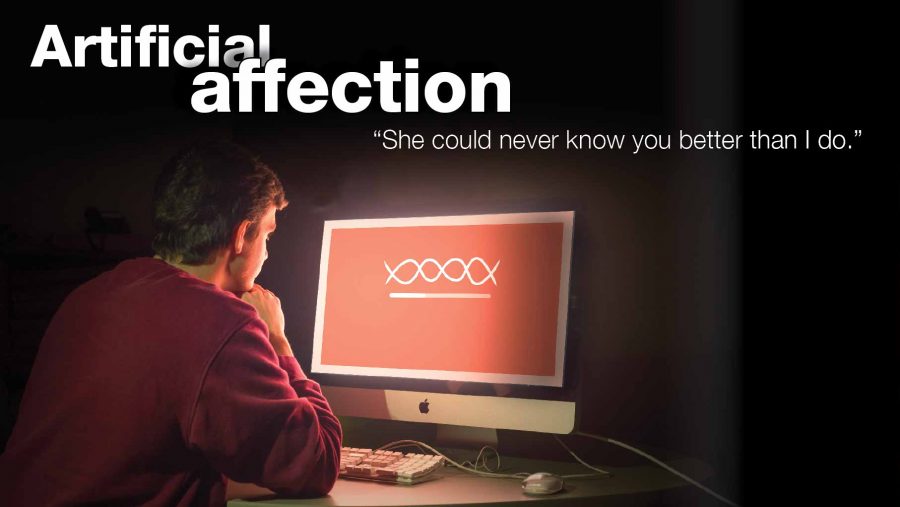By Reed O’Mara and Dylan Walker
Spike Jonze’s most recent work, “Her,” starring Joaquin Phoenix and Scarlett Johansson, is a “boy-meets-operating-system” romance story, with equal parts sci-fi and drama. The film takes place in the not-so-distant future, a place the New York Times says is not reinvented, but is a “modestly embellished” version of the present.
In the film, Phoenix’s character, Theodore, falls for a computer program named Samantha. Though she is a voice without a body, she is her own artificially intelligent being and evolves rapidly through her experiences, becoming a crutch for the lonely Theodore.
“Artificial intelligence in a generic, layman’s term, is when a robot can sense its environment and make decisions to make it able to achieve its task based on its perceptions,” said Kenneth Ricks, an associate professor of electrical and computer engineering at The University of Alabama.
Though Ricks said technology like Samantha is still ahead of us, he said aspects of this technology are a work-in-progress reality. In fact, on his desk and in his lab lie many robots with artificial intelligence capabilities, ranging from navigation to remote sensing abilities.
“This was actually a student project,” Ricks said, referring to a robot that navigates mazes. “It will actually find its own way through a maze. Hit a button, hands off and pray.”
Ricks said customized technology already exists but simply lacks the original thought produced by Samantha, and instead it relies on algorithms to figure out its next move.
Ricks said the main appeal of artificial intelligence today is that it is customized to the wants and needs of each person, whether that simply be related ads on a website or a certain voice on a GPS or iPhone.
“When you’re interacting with technology, and the technology is designed to please a person, you get your way all the time,” Ricks said. “I think it can certainly feel good because its customized to us.”
This customized technology can begin to feel like its own person, as dramatized in “Her,” and humans can become emotionally fulfilled by this inhuman being due to what Ross Owens, a second-year master’s student in anthropology, calls the actor-network theory.
“The social theory I use is called the actor-network theory, which basically says that inhuman objects have the exact same social value as human actors,” Owens said. “Especially with smartphones, you can make it have any sound you want, you can make it look a certain way. And actually, this is a very old thing that humans have always held.”
A current debate over the production of artificial intelligence weighs the repercussions it could have on cultural and social interactions.
Katy Groves, an anthropology professor with a background in psychology, said positives and negatives exist when working with this technology.
“Now we can connect with people all over the world very rapidly, so in some ways, it improves our social interaction,” Groves said. “I think the movie was trying to portray that it ‘artificializes’ our interactions so that they are more superficial and less in-depth than interpersonal interaction.”
Despite pros and cons, technology is becoming seamlessly immersed into society. According to the Huffington Post, 58 percent of smartphone users don’t go an hour without checking their phones. This is especially true within the 18-to-36 age group, where 68 percent don’t go an hour without checking. Though studies show people are “over-using” their phones, in actuality, most of the technology people use is far more advanced than they’ll ever need.
“It happens every time, every day,” Ricks said. “The PCs and computer systems spend more time waiting on us to give them data than they actually spend time working on the data. On a day-to-day basis, your phone can do more than you’re ever asking it to do.”
In “Her,” this becomes a crucial plot element, as the operating systems, like Samantha, begin to evolve faster than their human counterparts. As Fei Hu, an associate professor in electrical and computer engineering, notes, this marks the break with current reality, because at the present, though humans model machines after themselves, they are still controlled by their creators.
“People cannot control humans very well, but people can control machines very well, so that’s why people try to design machines to emulate humans,” Hu said.
As humans move toward technology, such as that depicted in “Her,” Hu said they don’t necessarily have to fear robots replacing all human-to-human interaction.
“People look around themselves and are disappointed, […] but humans still like humans. That’s why they make phony humans, to have something to control,” Hu said.
“Her” depicts all the ups and downs of a normal relationship, even though it is between a man and disembodied computer, all the while emphasizing the difference between mechanical precision and human imperfection.
“Humans biggest advantage is that we can make mistakes. We’re not perfect, and because we have mistakes, it’s real; it’s more interesting,” Hu said.







